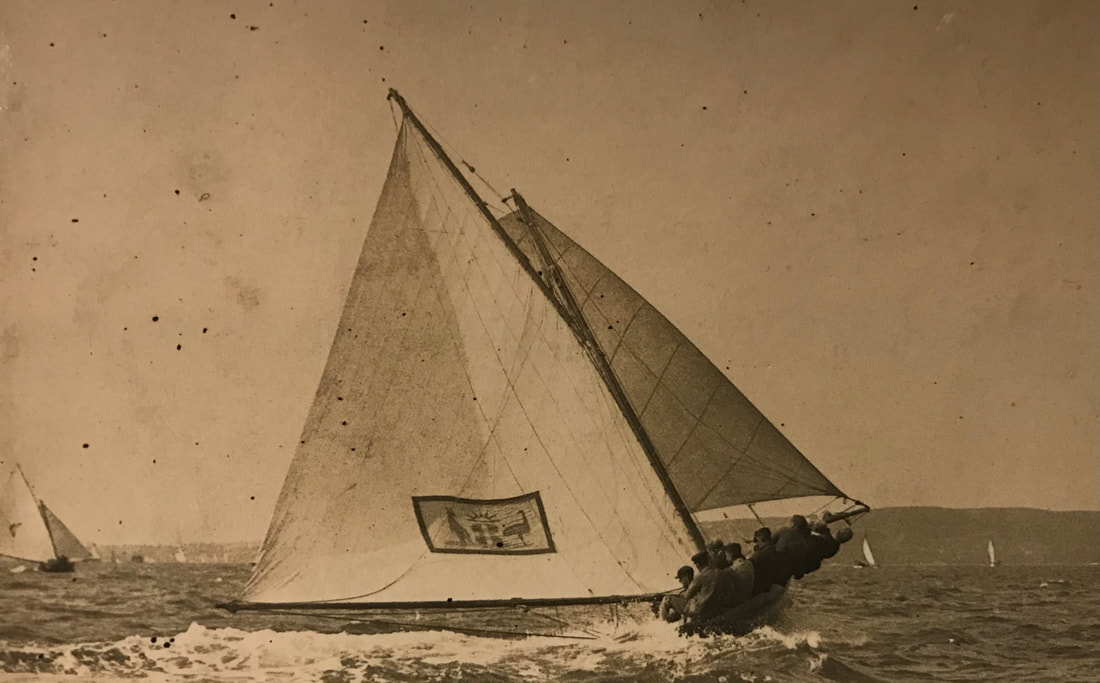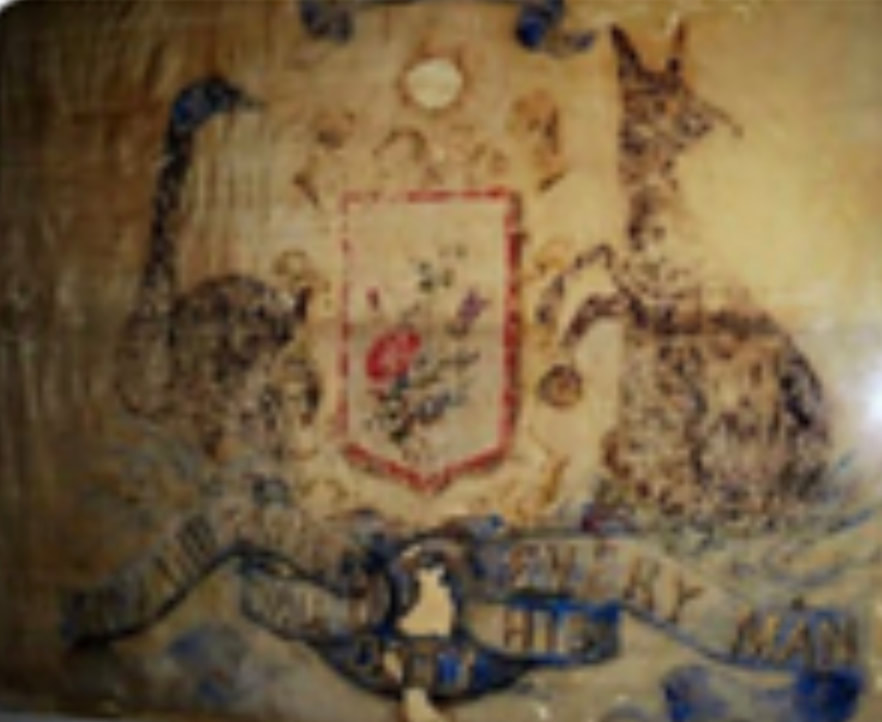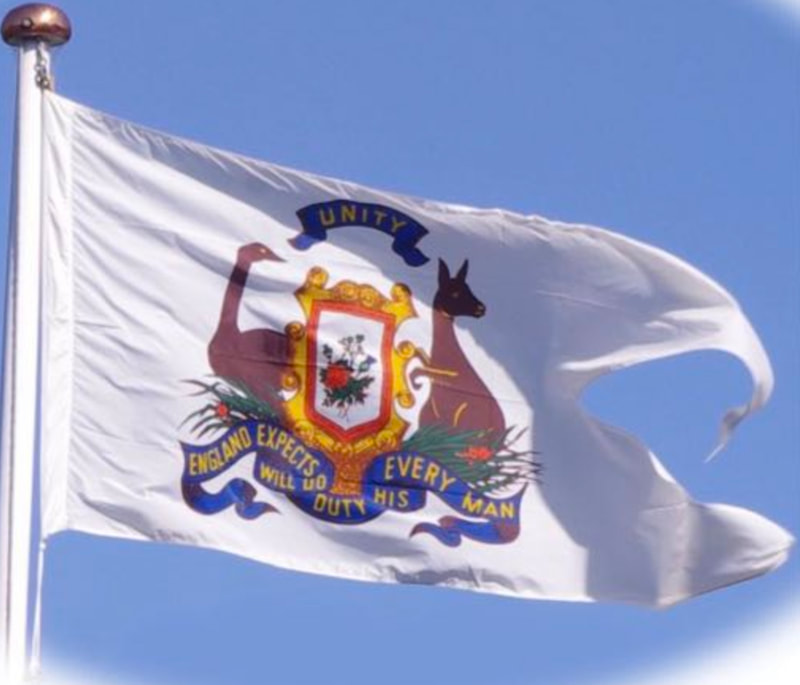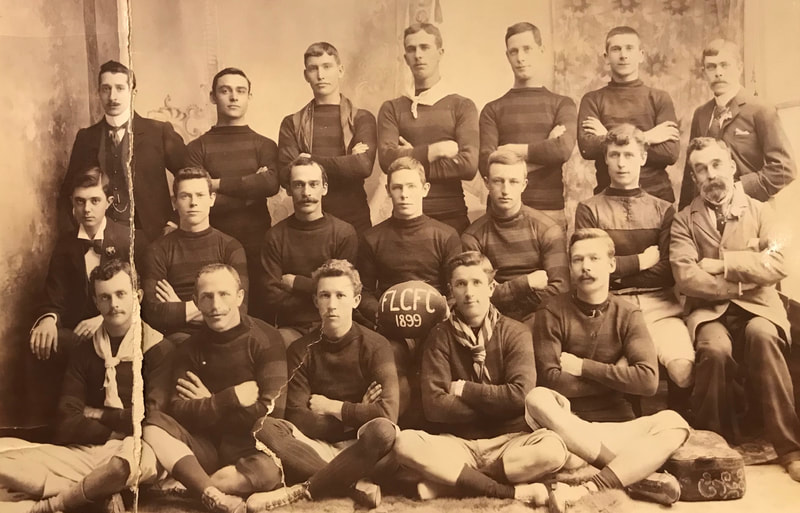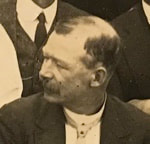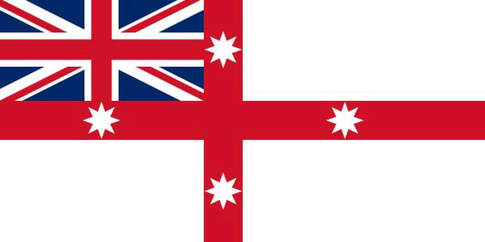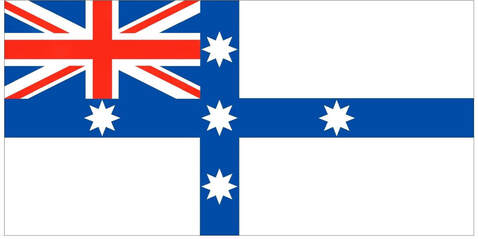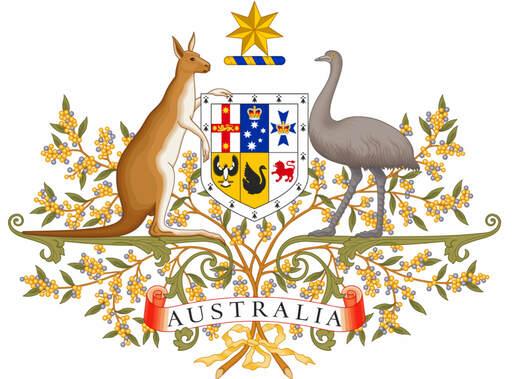
Happy Harry Thompson carried what appeared to be a modified Australian coat of arms on his 18-footer Advance* from its launching in 1909 until he sold it and replaced it with a new boat NSW* in 1922 and carried over the rig and the insignia until the boat was retired in 1942. The kangaroo and emu’s bodies are both turned away but their heads are turned to look towards each other, unlike the the standardised official coat of arms where their bodies and heads both face each other. In his pioneering book Bluewater Bushmen of 1983 Bruce Stannard suggested that this could have been Harry’s private joke but no-one seems to have publicly commented.
Left: The current official Australian coat of arms granted in 1912. Wikipedia.
Below:The first official Australian coat of arms granted in 1908, just before the launching of Harry Thompson’s Advance.
Left: The current official Australian coat of arms granted in 1912. Wikipedia.
Below:The first official Australian coat of arms granted in 1908, just before the launching of Harry Thompson’s Advance.

This always puzzled me, so on the principle that it is always best to consult the experts, I contacted John Vaughan, Sydney’s leading flag guy (although John prefers the term Vexillographer). The answer was simple and staring us in the face. The Australian coat of arms was possibly inspired by the Advance Australia coat of arms painting first seen around 1821, which itself was derived from the Bowman flag of 1806 commemorating the Battle of Trafalgar. The attitude of the emu and kangaroo differ on all versions including Harry’s. Harry’s flag has the kangaroo and emu resembling those on the Bowman flag of 1806, but the rest of it more closely resembles the Advance Australia coat of arms of 1821. I would suggest that there is little significance to the attitude of the animals but great significance to the fact that he named his boat Advance.
Above: The original Bowman flag of 1806 in the Mitchell Library, and John Vaughan’s reconstruction. Both photos John Vaughan.
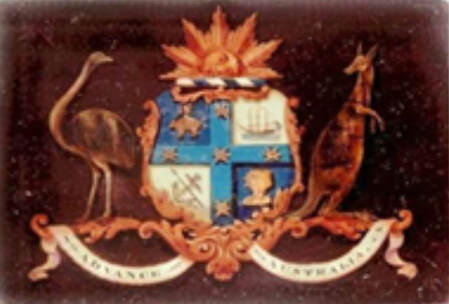
Left: The Advance Australia coat of arms painted on a wooden panel and first displayed circa 1821 by Thomas Silk on the ship Prince of Orange. John Vaughan quotes Hubert de Vries "The 'Advance Australia Arms' became widely used in the Australian colonies by private corporations and individuals. Although they never had any official status, they formed the basis for several official coats of arms." Mitchell Library, photo John Vaughan.
The flags Harry used as insignia are quite detailed and I would assume that they are likely to have been commercially available. Harry would have needed two flags for each mains’l, and with probably 3 mains he would have needed 6 flags, so he is unlikely to have made them up himself. However, there is a published reference to Harry making a hobby of needlepoint, so it is vaguely possible. In fact in the Sydney Flying Squadron collection there is an example of Harry's needlework (as well as an example of his other hobby of painting birds). Current COVID restrictions are keeping me from accessing the Squadron, but I will post images of these when I am able to. Harry had been a tough representative Rugby player, in fact his earlier nickname was “Wallaby” Thompson, and until the samples of his work were discovered I was inclined to think it was a joke, he was more versatile than I thought. By the way he also played the banjo!
Above left: Harry Thompson furthest right front row with his Rugby team, and right in his later sailing years. Both photos Harry Thompson collection, Sydney Flying Squadron.
John Vaughan adds: "The first Southern Cross flag was the Australian National Colonial white ensign 1823/24 with four stars on a red cross. It was superseded by a five star Southern Cross design on a blue cross. it was the Australian Ensign, now known as the Australian Federation Flag which was widely flown for some seven years from 1831. This flag became a potent symbol for the Australian Federation movement."
